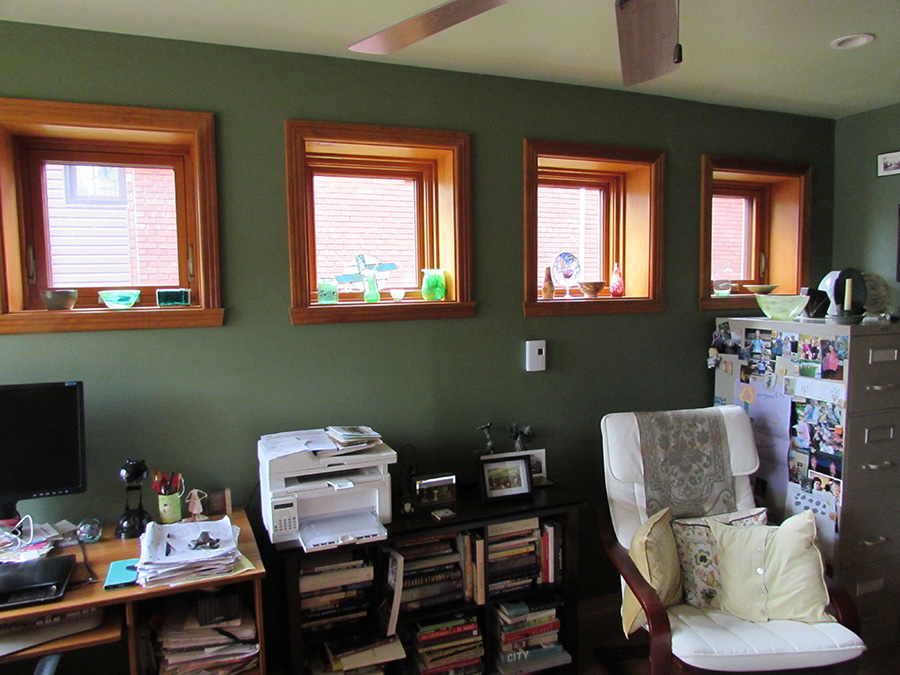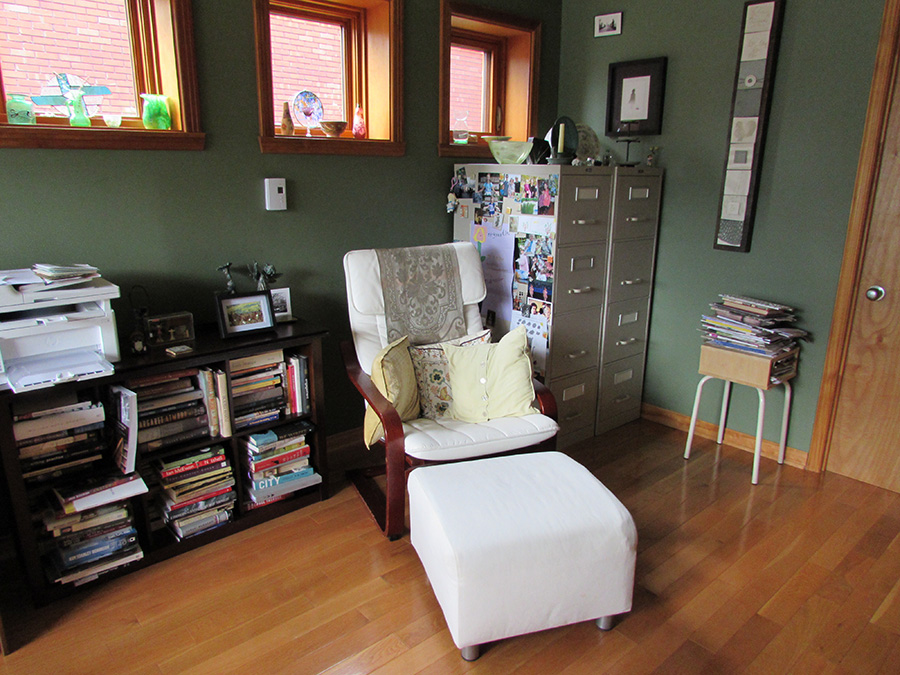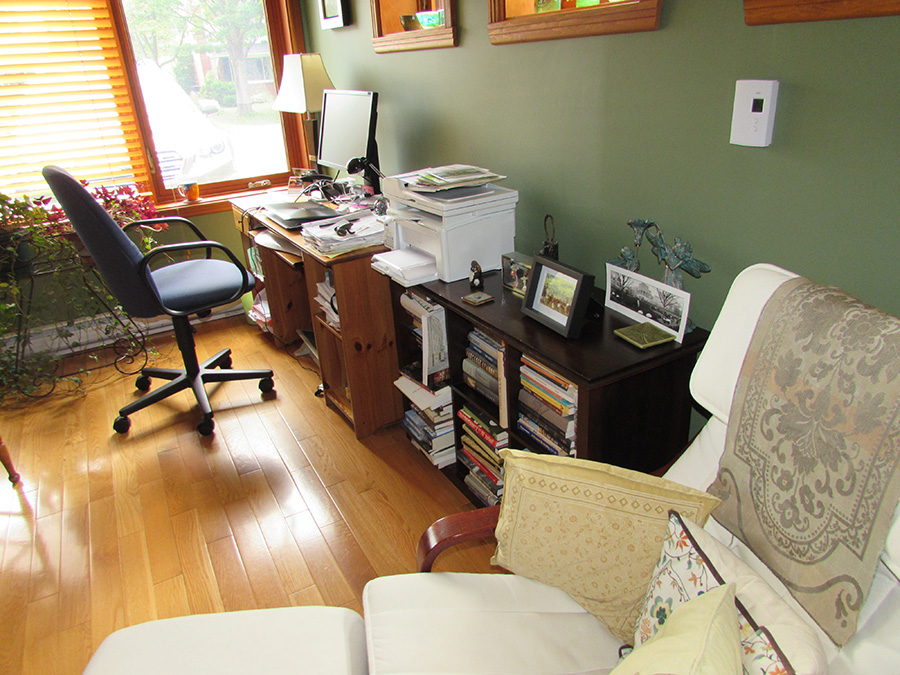Writing Spaces: Stephanie Bolster
This week in Writing Spaces, we take a look at the working space of Stephanie Bolster, author of the three poems “All,” “Here,” and “Cusp” in Issue #147.

During the months before my second daughter’s birth, our garage door became a wall of windows. The four small existing windows, cobwebbed, with cracked red frames, transformed into my favourite feature of my new office, their now-deep ledges (to insulate, we made new walls within the walls) home to beloved objects: a green glass box my parents gave me when I moved away from my native BC; a vase made of glass containing ash from Mount St. Helens. I finished alphabetizing the books just days before the birth, and on my first full day as a mother of two, nursed in my Poäng chair while reading a manuscript I’d agreed to endorse.

At first, I thought this space would be too big; I’d loved my cramped old office (now the baby’s room), with its view over the backyard, its privacy and vantage. The widower who’d lived in the house behind ours since the neighbourhood was developed in the ’50s showed up in my poems (reading in his sun room), as did the white pine a previous owner had brought from his native New Brunswick. I didn’t want to trade them for the street, and what would I do with all the space?

Let others in, it turns out. Sometimes both of my girls read and play here while I work. (Not while I write. For that, I need to be, or at least feel, alone.) My elder daughter’s friends have drunk eggnog at my desk while working on a PowerPoint for school. The ceiling’s been strung with blue streamers for an Under the Sea birthday party, the shelves covered with a disco mural for a dance party.

Those shelves which, when I filled them nearly eight years ago, left just a little space for new acquisitions, have, of course, filled to overflowing. I’ve long since broken my promise to myself not to shelve books two deep, not to stack them horizontally across the vertical arrangement, nor crowd the fronts of the shelves with knickknacks, photographs, cards, drawings.

Instead of projecting myself onto the backyard, I see the octogenarian next-door neighbor wheel out his recycling and compost bins each Monday night at nine, the earliest permitted time according to our city bylaws. (I put ours out hours earlier, so as not to interrupt my time at my desk. So far, no fines.) When canvassers show up, I can’t pretend not to be home; they see me well before they ring the bell. The man who co-runs the art camp my daughters have attended for years sometimes cycles up the hill to the high school where he teaches. If we both look up at the right time, we wave. Sometimes there’s a groundhog sniffing the driveway, sometimes a skunk at dusk, bees in July visiting the yellow bursts of the St. John’s wort.

On days when I don’t have to go to campus for classes or meetings, I critique student poems and write e-mails here; when I can, which means primarily during the spring and summer months, I work on my own poetry. For the past many years, I’ve been writing about rooms destroyed by Hurricane Katrina and its aftermath; when I imagine disaster taking our house, it’s my office I mourn first. I’ve written on trains and in planes, in hotel rooms and botanical gardens and my office on campus, but here’s where the real thing happens most reliably. It’s not irrelevant that this poetry manuscript, in which the uncontrollable world has flooded my consciousness, has coincided with this space. Here, at ground level, where a vehicle was once kept, it’s impossible for anything to be entirely one’s own. That, I’ve come to see, is (mostly) a good thing.
We’re giving you a behind-the-scenes look into the writing process – straight from the desks (and decks, docks, beds, and favourite hiking trails) of our contributors! Check out the full series here.

